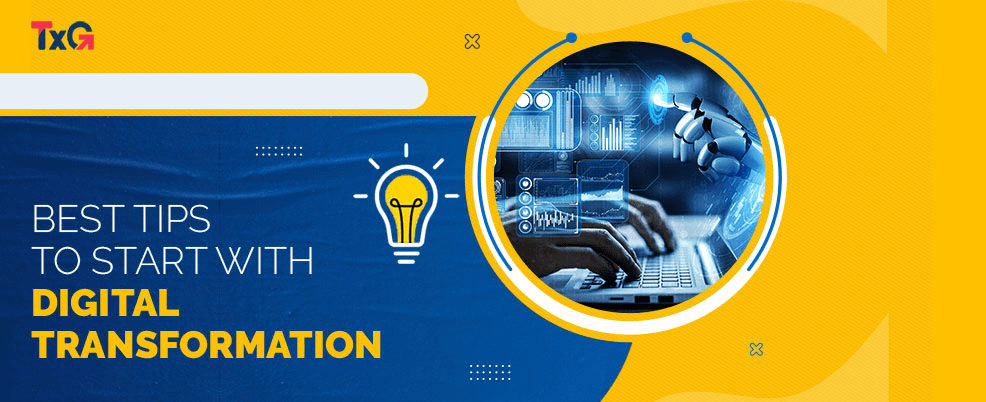What does the term “digital transformation” mean?
Digital transformation refers to the process of utilizing digital technologies to fundamentally change and improve the way organizations operate, deliver value to customers, and interact with stakeholders. It involves leveraging digital tools, data analytics, automation, and innovative technologies to enhance operational efficiency, enable new business models, and create better experiences for customers and employees. Digital transformation goes beyond implementing new technology; it requires a comprehensive shift in mindset, culture, and processes to fully embrace the opportunities presented by the digital age.
How long does it take to undergo a digital transformation?
The duration of digital transformation can vary greatly depending on several factors, including the size and complexity of the organization, the scope of the transformation, the level of technological maturity, and the specific goals and initiatives involved. Digital transformation is a continuous and evolving process rather than a one-time event, and it can take several years for organizations to complete a comprehensive transformation. However, smaller-scale digital initiatives or specific process improvements can be implemented in shorter timeframes, typically ranging from several months to a year. It’s important to note that digital transformation is an ongoing journey that requires continuous adaptation and improvement as technology and business landscapes evolve.
Why is digital transformation important?
Digital transformation is crucial for organizations to stay competitive and thrive in today’s rapidly evolving digital landscape. It enables organizations to leverage new technologies, optimize processes, and unlock innovative business models to meet changing customer expectations. Digital transformation improves operational efficiency, enhances customer experiences, drives data-driven decision-making, enables agility and scalability, and fosters innovation and growth. By embracing digital transformation, organizations can future-proof themselves, adapt to market disruptions, and seize new opportunities in the digital era. Failure to undergo digital transformation can leave organizations at a disadvantage, susceptible to being outpaced by competitors and missing out on the benefits of emerging technologies.
Tips to Start with Digital Transformation
Starting a digital transformation can be a complex endeavour, but with careful planning and execution, it can lead to significant benefits for your organization. Here are some tips to help you get started on your digital transformation journey:
- Define your vision:
Start by clearly defining your digital transformation goals and vision. What do you want to achieve with your digital initiatives? This will provide a guiding framework for your transformation efforts.
- Assess your current state:
Evaluate your current systems, processes, and technologies to identify areas that need improvement. Understand your strengths and weaknesses to determine where digital solutions can have the most impact.
- Create a roadmap:
Develop a detailed roadmap that outlines the specific steps and milestones for your digital transformation. Prioritize initiatives based on their potential impact and feasibility. Break down the roadmap into smaller, manageable projects for easier implementation.
- Foster a digital culture:
Digital transformation is not just about technology; it’s also about people. Cultivate a digital mindset and promote a culture of innovation, collaboration, and continuous learning within your organization. Encourage employees to embrace digital tools and adapt to new ways of working.
- Get leadership buy-in:
Secure support from top leadership and make sure they understand the value and importance of digital transformation. Leadership buy-in is crucial for securing necessary resources, driving organizational change, and overcoming potential resistance.
- Build a cross-functional team:
Assemble a diverse team that includes representatives from different departments or functions within your organization. This team will be responsible for driving the digital transformation initiatives, ensuring alignment, and managing the implementation process.
- Prioritize user experience:
Focus on delivering exceptional user experiences across all digital touchpoints. Understand your customers’ needs and expectations and design digital solutions that are intuitive, user-friendly, and provide value.
- Embrace data-driven decision-making:
Leverage data and analytics to gain insights, make informed decisions, and drive continuous improvement. Invest in data infrastructure, analytics tools, and talent to enable data-driven decision-making at all levels of your organization.
- Collaborate with partners:
Identify external partners, such as technology vendors, consultants, or industry experts, who can provide guidance, expertise, and support throughout your digital transformation journey. Collaborate with them to leverage their knowledge and experience.
- Iterate and adapt:
Digital transformation is an ongoing process, and it’s important to remain flexible and adaptable. Continuously monitor your progress, gather feedback, and make adjustments as needed. Embrace a mindset of experimentation and iteration to drive continuous improvement.
Remember, digital transformation is a long-term journey, and success requires commitment, patience, and perseverance. Celebrate small wins along the way and stay focused on the ultimate goal of creating a more digitally-enabled and agile organization.
Conclusion
In conclusion, starting a digital transformation journey is crucial for businesses to succeed in the current digital environment. Organisations may increase their operational effectiveness, stimulate innovation, and react to shifting market dynamics by embracing digital technology, establishing a digital culture, and placing a priority on customer experiences. Digital transformation is a continual process that, while its length varies, calls for careful planning, leadership backing, and a focus on incremental improvement. Organisations may seize new possibilities, maintain competitiveness, and ensure their success in the future by adhering to best practises and being dedicated to the transition.
How can Tecnolynx help you?
We work closely with your business to understand your goals and objectives, assess your current digital capabilities, and develop a tailored digital transformation strategy. This strategy will outline the specific steps, initiatives, and timelines required to achieve your transformation goals while considering factors such as resource allocation and risk management.
We assist in identifying and implementing the right digital tools and technologies that align with your business needs. This includes selecting and integrating software applications, cloud solutions, data analytics platforms, and other technology infrastructure necessary for a successful transformation.
Digital transformation involves cultural and organizational changes. We can support your business in managing this change by developing change management strategies, providing training programs, and fostering a digital culture within your organization. By helping employees understand and embrace new technologies and ways of working, we can ensure a smoother transition and higher adoption rates.
Once the digital transformation initiatives are implemented, we assist in monitoring and evaluating their performance. By leveraging data analytics and key performance indicators (KPIs), we provide insights into the effectiveness of the implemented solutions and identify areas for improvement. This allows for continuous optimization and refinement of your digital transformation efforts.
Overall, we provide end-to-end support throughout your digital transformation journey, from strategy development to technology implementation, change management, and ongoing optimization. By leveraging my expertise and experience, we help your business navigate the complexities of digital transformation and achieve a smooth and successful transition.


